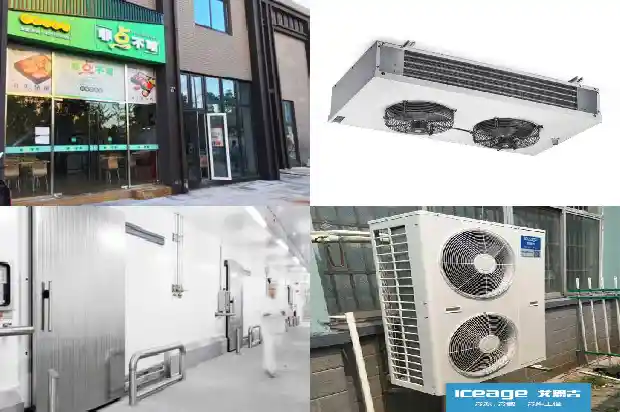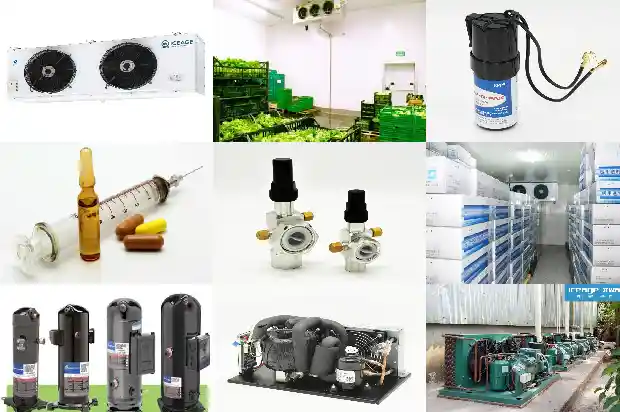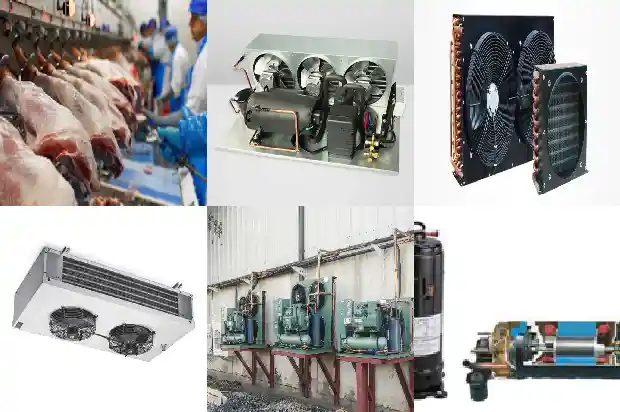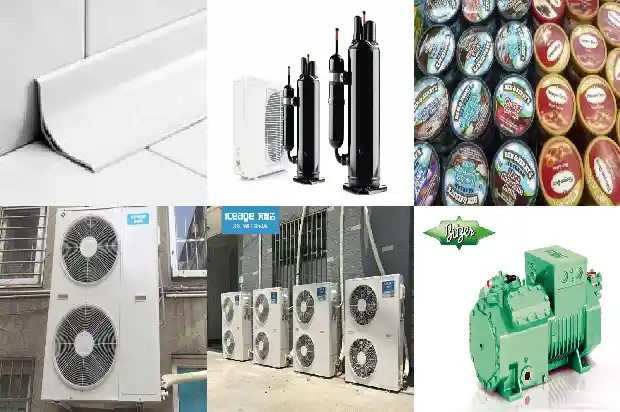Solutions to Common Compressor Failures
2024-12-27
- Analysis of Current Fault Causes
A. First, test the actual current value of the compressor during idling for confirmation.
B. The current transformer or thermal relay is adjusted too small or has quality problems itself.
C. Abnormally low or high voltage causes excessive current in the compressor. - Analysis of Exhaust Probe Fault Causes
A. Insufficient refrigerant in the system can cause excessively high exhaust temperature.
B. Excessive refrigerant in the system can also cause excessively high exhaust temperature.
C. Quality problems of the exhaust probe itself lead to exhaust faults.
D. Slight blockage in the heat pump throttling device causes high exhaust pressure, resulting in a relatively high exhaust temperature. - Analysis of High - pressure Fault Causes
A. For a repaired heat pump, check if the refrigerant is excessive. This may not be noticeable in winter when the temperature is low, but in summer, it can cause high pressure and trigger high - pressure protection.
B. The head and flow rate of the circulating water pump are too small and not equipped as required by the company.
C. Check if the low - water - level probe of the water - level probe is installed properly. The probe should be higher than the circulating water outlet.
D. Scaling in the condenser (abbreviated as sleeve, high - efficiency tank, plate heat exchanger) causes poor heat transfer, resulting in high system pressure. This is generally caused by the use of groundwater.
E. Malfunction of the water pressure switch due to tap water outage can also trigger a high - pressure alarm. - Unit Fails to Operate
A. Power failure. Disconnect the power switch and check the power supply.
B. Loose power connection of the unit. Identify the cause and repair it.
C. The control power fuse of the unit is blown. Replace it with a new one. - The Water Pump Operates but Water Does Not Circulate or the Water Pump Produces Loud Noise
A. Water shortage in the water system. Check the system make - up water device and replenish water to the system.
B. Air in the system. Vent the air in the water system.
C. The water system valves are not fully opened. Open the water system valves fully.
D. The water filter is dirty and blocked. Clean the water filter. - The Heating Capacity of the Unit is Low
A. Insufficient refrigerant. Check for leaks in the system and recharge the refrigerant.
B. Poor insulation of the water system. Strengthen the insulation of the water system.
C. The drier - filter is blocked. Replace the drier - filter.
D. Poor heat dissipation of the air heat exchanger. Clean the air heat exchanger.
E. Insufficient water flow. Clean the water filter. - The Compressor Does Not Operate
A. Power failure. Identify the cause and solve the power problem.
B. The compressor contactor is damaged. Replace the contactor.
C. Loose wiring. Identify the loose point and repair it.
D. Compressor over - heat protection. Identify the cause of over - heating, troubleshoot, and then restart the unit.
E. The water outlet temperature is too high. Reset the water outlet temperature.
F. Insufficient water flow. Clean the water filter and vent the air in the system. - The Compressor Produces Loud Operating Noise
A. Liquid refrigerant enters the compressor. Check if the expansion valve has failed.
B. Internal parts of the compressor are damaged. Replace the compressor. - The Fan Does Not Operate
A. The fan set screw is loose. Tighten the set screw.
B. The fan motor is burned out. Replace the fan.
C. The contactor is damaged.

Replace the contactor.
- The Compressor Operates, but the Unit Does Not Heat
A. All refrigerant has leaked. Check for leaks in the system and recharge the refrigerant.
B. Compressor failure. Replace the compressor. - Water Flow Protection
There are generally two possibilities for water flow protection: the water circuit system is blocked and the water flow switch itself is damaged. Usually, the water flow fault is caused by water circuit problems. The specific troubleshooting methods are as follows: - Excessive Exhaust Pressure
A. Excessive refrigerant. Discharge the excess refrigerant.
B. Non - condensable gas in the fluorine circuit system. Discharge the non - condensable gas.
C. Insufficient water flow. Check the water system and increase the water flow. - Low Suction Pressure
A. The drier - filter is blocked. Replace the drier - filter.
B. The solenoid valve is not opened. Repair or replace the solenoid valve.
C. The pressure drop through the heat exchanger is too large. Check if the opening of the thermal expansion valve is appropriate.
D. No refrigerant in the heat pump system or refrigerant leakage. - The Wired Controller Malfunctions/Black Screen
A. Wired controller black screen: First, confirm if the unit is powered on, and then try replacing it with a new wired controller. If it still doesn't light up, focus on checking if the unit main board has output. If there is no output, it may be that the main board transformer is damaged or the main board fuse is burned. Replace it. Of course, in this case, more observation is needed later to rule out the possibility of load short - circuit to avoid secondary damage to the components.
B. The wired controller reports a communication fault: When a communication fault is reported, check if the wiring is loose. If it is not loose, there is usually a voltage problem. Focus on measuring whether the voltage is abnormal.
C. The wired controller is not sensitive: If the wired controller is not sensitive when first used, the internal wiring may be pressing against the buttons. If the buttons of the wired controller are not sensitive after normal use for a period of time, it may need to be replaced. - Air Switch Tripping
A. The air switch cannot be closed: Replace the air switch and ensure that the wires are not loosely connected. If it still doesn't work, it may be that the compressor is grounded or the main board has a short - circuit. After accurate judgment, the compressor or the main board needs to be replaced.
B. The air switch trips occasionally: This is usually caused by loose connection of the air switch wires. Focus on checking if the wires are firmly connected. Of course, if the air switch is placed in a place with high humidity, it may be affected by moisture and cause tripping.
Related Articles
- Common Faults and Solutions of Central Air - conditioning Chiller Units
- Common Faults and Corresponding Solutions of Chillers During Use
- 9 Heating and Cooling Solutions: Pros and Cons You Must Know!
- Common Issues in Chiller Operation and Solutions
- Reasons and Solutions for High and Low Condensing Pressure in Air-cooled and Water-cooled Systems
- Centrifugal Compressor: 5 Common Fault Solutions
- Causes and Solutions for Elevated Pressure in Cold Storage
- High Power Consumption of Constant Temperature Freezer and Its Solutions
- Have You Encountered the Three Common Problems of Refrigeration Compressors?
- What to Do if the Compressor of a Frozen and Refrigerated Display Cabinet Runs but the Refrigeration Effect Is Poor?
- What to Do if the Compressor of the 【Refrigerated and Frozen Display Cabinet】 Unit Fails to Start?
- Precautions for Using Rotary Refrigeration Compressors
- How to Resolve the Scuffing Issue of Cold Storage Compressors
- Composition and Common Faults of Screw Refrigeration Compressors
- What Are the Causes of Scroll Compressor Damage?
- Do You Know These Four Scenarios That Can Cause Compressor Failures?
- What Are the Reasons for Insufficient Air Output of Screw Air Compressors?
- How to Solve the Problem of Frequent Shutdown and Startup of Cold Storage Compressors?
